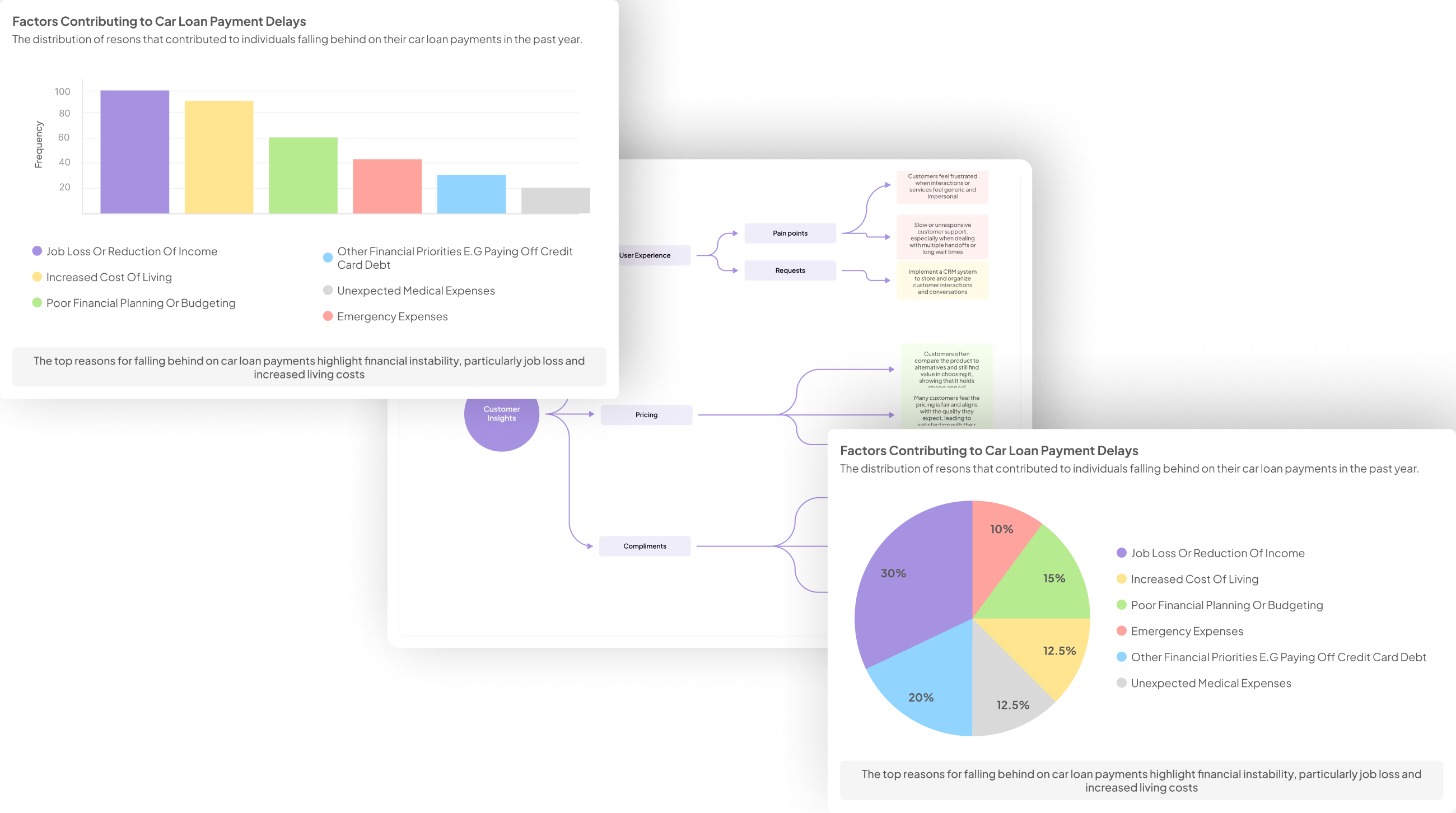Call Center Predictive Analytics: Future Trends
-
Bella Williams
- 10 min read
In today's fast-paced business environment, call centers are under constant pressure to adapt and perform efficiently. AI-driven forecasting offers a transformative approach to managing call volumes and enhancing customer interactions. By analyzing historical data and trends, this technology helps predict future demands, allowing call centers to optimize their resources effectively.
Implementing AI-driven forecasting not only improves staffing decisions but also enhances customer experiences. With precise predictions, organizations can ensure the right number of agents are available at peak times, reducing wait times and increasing satisfaction. As the industry evolves, the integration of advanced analytics will be crucial for call centers aiming to stay competitive and responsive to customer needs.
Generate visualizations from your qualitative data. At Scale.

The Role of AI-Driven Forecasting in Call Center Operations
AI-Driven Forecasting plays a crucial role in enhancing the overall functionality of call center operations. By analyzing historical data and current trends, AI can predict call volumes and customer needs, ensuring that staffing levels are optimized. This predictive capability allows call centers to prepare for peak times and manage resources effectively, reducing wait times for customers and improving service levels.
Additionally, AI-Driven Forecasting can provide insights into customer preferences and frequently asked questions. By identifying patterns in customer inquiries, call centers can better train their staff and tailor services. This continuous loop of feedback and improvement not only increases customer satisfaction but also drives operational efficiency. As AI technology evolves, its integration into call center analytics will become increasingly sophisticated, paving the way for a more responsive and customer-centric service environment.
Enhanced Customer Experience through Predictive Analytics
Predictive analytics plays a significant role in enhancing customer experience within call centers. By harnessing AI-driven forecasting, organizations can better anticipate customer needs and tailor interactions accordingly. This proactive approach enables agents to not only respond to inquiries but also to engage customers by asking insightful questions that deepen understanding of their challenges and preferences. Consequently, customers feel valued and understood, leading to increased satisfaction and loyalty.
Moreover, predictive analytics allows for the timely identification of patterns in customer behavior. This data-driven insight supports informed decision-making, which transforms how agents manage calls and deliver solutions. Equipped with relevant information, agents can recommend suitable products or services that align with customers' needs, fostering a more personalized experience. As these technologies advance, organizations that prioritize AI-driven forecasting will likely lead the way in delivering exceptional customer service.
Improving Operational Efficiency with AI Forecasting
AI-driven forecasting represents a transformative approach in improving operational efficiency within call centers. By analyzing historical call data and recognizing patterns, organizations can optimize staffing levels and reduce wait times for customers. This predictive capability allows centers to anticipate busy periods, ensuring that adequate resources are in place to meet customer demand.
Furthermore, implementing AI forecasting streamlines numerous operational processes. It assists in identifying training needs for agents by spotting recurring issues and trends in inquiries. This enables targeted coaching, fostering a more skilled workforce. Additionally, by automating routine data analysis, teams can focus on strategic initiatives rather than manual tasks, enhancing overall productivity and effectiveness. Embracing AI-driven forecasting not only boosts operational efficiencies but also contributes to a more responsive and customer-centric call center environment.
Evaluate Performance on Customer Calls for Quality Assurance.
Future Trends in AI-Driven Forecasting for Call Centers
The future of AI-Driven Forecasting for call centers promises to bring transformative changes in how operations are managed. One emerging trend is the integration of real-time data, enhancing the accuracy of forecasts. By continuously analyzing incoming data, call centers can adapt to fluctuations immediately, ensuring agents are present during peak times and reducing wait times for customers. This level of responsiveness will foster a more seamless customer experience and improve overall satisfaction.
Additionally, predictive analytics will play a crucial role in workforce management. With advanced algorithms, organizations can anticipate staffing needs based on historical call patterns and seasonal trends. This proactive approach minimizes overstaffing and understaffing scenarios, optimizing resource allocation. As AI technologies continue to evolve, call centers will harness even deeper insights, driving efficiencies that align with customer expectations. This synergy of real-time data and predictive analytics will be vital for companies eager to thrive in an increasingly competitive environment.
Integration of Real-time Data for Forecast Accuracy
Integrating real-time data into call center operations significantly enhances forecast accuracy. This dynamic approach allows organizations to adjust their strategies based on current trends and customer behaviors. By harnessing AI-driven forecasting techniques, call centers can access real-time analytics that help predict call volumes and service demands more effectively.
The process entails continuously collecting and analyzing data, enabling immediate feedback loops. This ensures that forecasting models are not only accurate but also responsive to sudden market changes. As a result, agents can shift from traditional methods to a more consultative role, better meeting customer needs. This integration fosters a proactive environment where decision-making is informed by the most relevant data available, ultimately leading to improved performance and customer satisfaction.
Predictive Analytics for Workforce Management
Predictive Analytics for Workforce Management focuses on utilizing data-driven insights to optimize staffing and enhance operational efficiency. Central to this approach is AI-Driven Forecasting, which employs sophisticated algorithms to anticipate call volumes and customer demand accurately. As call centers navigate varying workloads, this predictive capability allows businesses to allocate the right number of agents at the right times, improving service levels while managing costs effectively.
Implementing AI-Driven Forecasting can significantly streamline workforce management processes. This technology analyzes historical data, identifies trends, and adjusts staffing plans based on anticipated needs. By accurately predicting peak times and potential lulls, call centers can enhance employee productivity and reduce burnout. Additionally, workforce optimization fosters a better atmosphere for both agents and customers, ensuring a more efficient call handling experience that aligns with evolving client demands. Ultimately, predictive analytics is not just about numbers; it actively shapes the future of customer service operations.
Conclusion: The Future of AI-Driven Forecasting in Call Centers
As industries increasingly embrace AI-driven forecasting, the future for call centers appears promising. This technology enhances decision-making processes by allowing organizations to anticipate customer needs and respond promptly. By integrating advanced analytics, call centers can achieve greater operational efficiency, improving both agent performance and overall customer satisfaction.
Moreover, the integration of real-time data will further refine predictive capabilities, enabling more accurate forecasting. With AI-driven forecasting, call centers are poised to transform their operations, ensuring they remain adaptable and competitive in a rapidly evolving landscape. Embracing these advancements can ultimately lead to more streamlined processes and enhanced service delivery.







